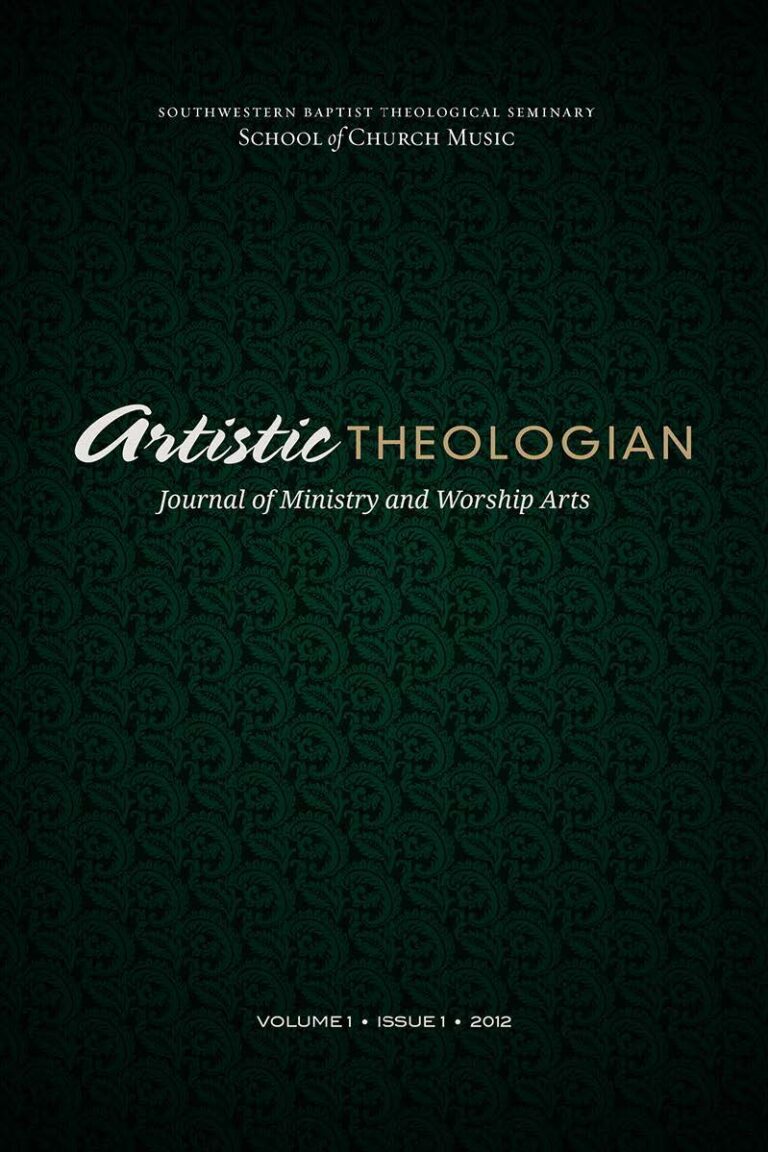
Introducing The Artistic Theologian
Artistic Theologian
Volume 1, Summer 2012
Editor-in-Chief: John E. Simons
The Worship Mall: Contemporary Responses to Contemporary Culture, by Bryan D. Spinks. New York: Church Publishing, Inc., 2010. 242 pp. $28.00.
Bryan D. Spinks is a priest in the Church of England and Goddard Professor of Liturgical Studies and Pastoral Theology at the Yale Institute of Sacred Music and Yale Divinity School.
Spinks’s goal is to present the reader with a panorama of the main trends in Christian worship in the so-called postmodern era. In the preface he acknowledges the fact that some of these forms try to be consciously postmodern, others are contemporary, and others are consciously countercultural. Both modern and postmodern cultures are linked with consumerism, electronic media, and globalization. It is because of this consumerism trait that current worship choices are compared to a shopping mall.
Other similitudes found with the commercial mall are that the mall, like the church, follows a calendar year (Halloween, Christmas, St. Valentine’s Day, Easter, Mother’s Day, etc.), it is open on Sundays, and people visit not only to buy objects, but also form an identity.
In subsequent chapters the author provides definitions of the terms used in Christian lingo regarding worship such as blended, fusion, alternative, seeker, multisensory, high tech, emerging and liquid, among others. One of the new terms the reviewer found is “liquid worship.” This refers to when the church is seen as a series of relationships and communications rather than a permanent gathering of people. In practice this occurs when there are worship stations in one building or location and people move from station to station. Other styles include “Celtic” worship, which the author wittily compares with contemporary medieval fairs because “they can be fun, people seem to enjoy them, and what is more, they also frequently make money” (181), rock band Eucharist services, jazz, hip-hop, and dancing liturgies. Samples of these worship formats are also included in the book.
As part of the “worship mall,” Spinks includes some types of indigenous worship that he considers countercultural due to the influence of Western forms of worship around the globe. Among them is the worship practiced in the African Independent Churches (AIC) and the Korean Minjung and Kuh-ak worship. There are also two other forms practiced in North America: the Amish and the Appalachian snake-handling sects. Protestant mega churches and their style of worship, which consists mainly of contemporary Christian music, are also discussed. There is a section dedicated to the Praise and Worship movement, including a description of song collections like those from Hillsong and Darlene Zschech.
The author traces the development of worship as entertainment back to the nineteenth-century camp meetings, where the preaching of the Word was the most important element in the service, and singing was considered a preliminary activity. According to Spinks, when these revivals moved to theaters, the church became theater-like. The concept of a spectacle rather than a worship service is seen in contemporary mega churches where many times they follow the TV talk show models. There is also a discussion in the book of the reforms in the liturgy of the Catholic Church.
Who plans the services is another concern for the author since in most non-traditional services there is normally a small group that designs the service and chooses the music. He also considers the limitations of implementing these models in other cultural settings, unlike the uniformity of liturgical forms in traditional denominations.
Since the discussion of these worship trends is framed in the postmodern era, Spinks poses the question as to whether these trends are really postmodern or if they are actually retro, since many of the proposed innovations were initiated in the modern era (the 1960s and 1970s), such as the use of audiovisuals, the use of props like scarves, banners, candles, balloons, and other arts. The author also asserts that the basic format of most “contemporary” services in evangelical churches follows the “third wave” movement of the 1980s. Perhaps the difference is that nowadays modern technologies, contemporary music originating in pop culture styles, advertising, and management techniques are the order of the day, but postmodern features are not necessarily seen in other parts of the service, like “modern” scriptural hermeneutics (critical rationality).
Another consideration when dealing with postmodern worship (contemporary or mega churches) is that large amounts of money are usually needed to have high tech worship services following the format of TV talk shows or rock concerts. The author poses the question of what happens when technology fails? Can meaningful worship take place only with this type of technology?
This book is reader-friendly, well documented, and practical for those who want to be informed of what is going on in worship practices in the United States and Great Britain. The comparison of the various brands and shops found in a typical mall in these two countries and the various worship offerings will be understood only by people who live in these cultural contexts.
Spinks’s denominational background is evident when he discusses the planning of services and gives advantages to standardized liturgical forms that determine the order and format of services, as in the Anglican tradition.
A curious worship leader in an evangelical contemporary church will find revealing facts in this book about the origin of the services labeled as contemporary, blended, seeker, among others, and hopefully this will motivate him or her to consider the relevance and meaningfulness to their congregations of what takes place Sunday after Sunday.
Edgar Cajas
Southwestern Baptist Theological Seminary
Fort Worth, TX





